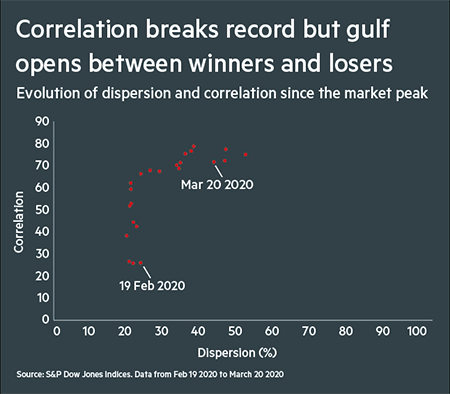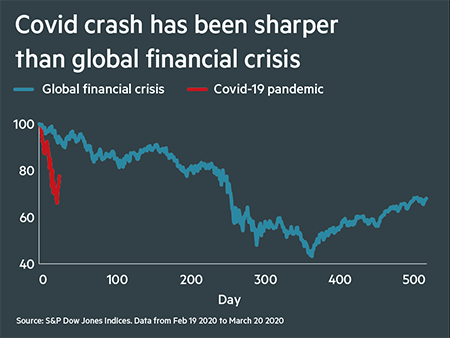Data crunch: Analysis suggests that under current conditions stock pickers could theoretically achieve healthy outperformance of their benchmarks. But with the consequences of getting it wrong equally elevated, can they actually select the winners, and can schemes pick the right managers?
“A period of rising asset prices boosted by easy monetary policy” has made passive investing “a smart allocation”, admitted Fidelity earlier in March, before arguing that this rule no longer holds.
“Now, however, it’s worth considering whether active strategies should become a greater focus for investor portfolios,” the report continued, arguing that active managers’ fall from grace has allowed them to hone their processes, ready for a bout of volatility.
That such volatility has now erupted into markets will be instantly clear to anyone, but a more granular analysis of conditions also holds promise for the theory of active management.
Craig Lazzara, managing director and global head of index investment strategy at S&P Dow Jones Indices, has looked at the dispersion and the correlation of returns in the S&P 500, drawing conclusions both about the state of the market and the opportunity set for actives.
While a month ago dispersion – the difference between winners and losers – was not high enough to call a bear market, this measure has now overtaken March 2008, and indeed the index has shed value faster than in the global financial crisis.
Owing to relative uniformity of the disruption to workforces and supply chains, correlation is now at an all-time high – different stocks are moving in the same direction at the same time.
It is the dispersion, though, that active funds will be eyeing.
“We’re in an environment of high volatility and high dispersion. That’s an environment in which active management has a huge opportunity to add value,” says Mr Lazzara, before cautioning: “If you’re right you’re going to add a lot of value. It also means if you’re wrong you’re going to lose a lot of value.”
Typically, active managers’ portfolios are more volatile than their benchmarks, due to their less diversified holdings. However, in a period of record correlation when most stocks move in the same direction, the benefit of diversification is limited.
However, Mr Lazarra’s faith in active manager claims is weakened by the fact that they are repeated every year regardless of market conditions.
“If they’re better than usual it won’t shock me, but the only caveat to keep in mind is that there’s no source of outperformance for the winners other than the underperformance of the losers.” More active managers may beat the benchmark this year, but “that doesn’t mean you can pick who they are”.
There are also signs of opportunity for passive investors in the current situation. In the aftermath of significant bouts of volatility, markets have always posted strong returns the next year, even if the following month has been less rosy.
History has been less kind on active managers, even in downturns. Robin Powell, editor of The Evidence-Based Investor and head of client education at RockWealth, points to the finding, first reported by Money Observer, that almost 80 per cent of funds in the IA UK All Companies sector fell further than the index in the recent volatility.
A further study of six market corrections by Lipper finds that average losses for large-cap growth funds outstripped falls in the S&P 500.
“The notion that active managers provide “downside protection” and that you’re any better off in an active fund in falling markets sounds perfectly plausible, but is in fact completely groundless,” he says.
Active funds may try to cushion falls by moving to cash, but Mr Powell cites Goldman Sachs analysis showing that fund managers miscalled all nine major market turning points.
“The bottom line is that you can’t get away from uncertainty. Markets are always uncertain, and it’s precisely that uncertainty, and the risk that the value of our investments might suddenly fall and not recover for several years that explains the so-called equity premium,” he says.
“Hard though it can sometimes be, investors need to embrace uncertainty – and steer clear of products that claim to protect you from it.”






















